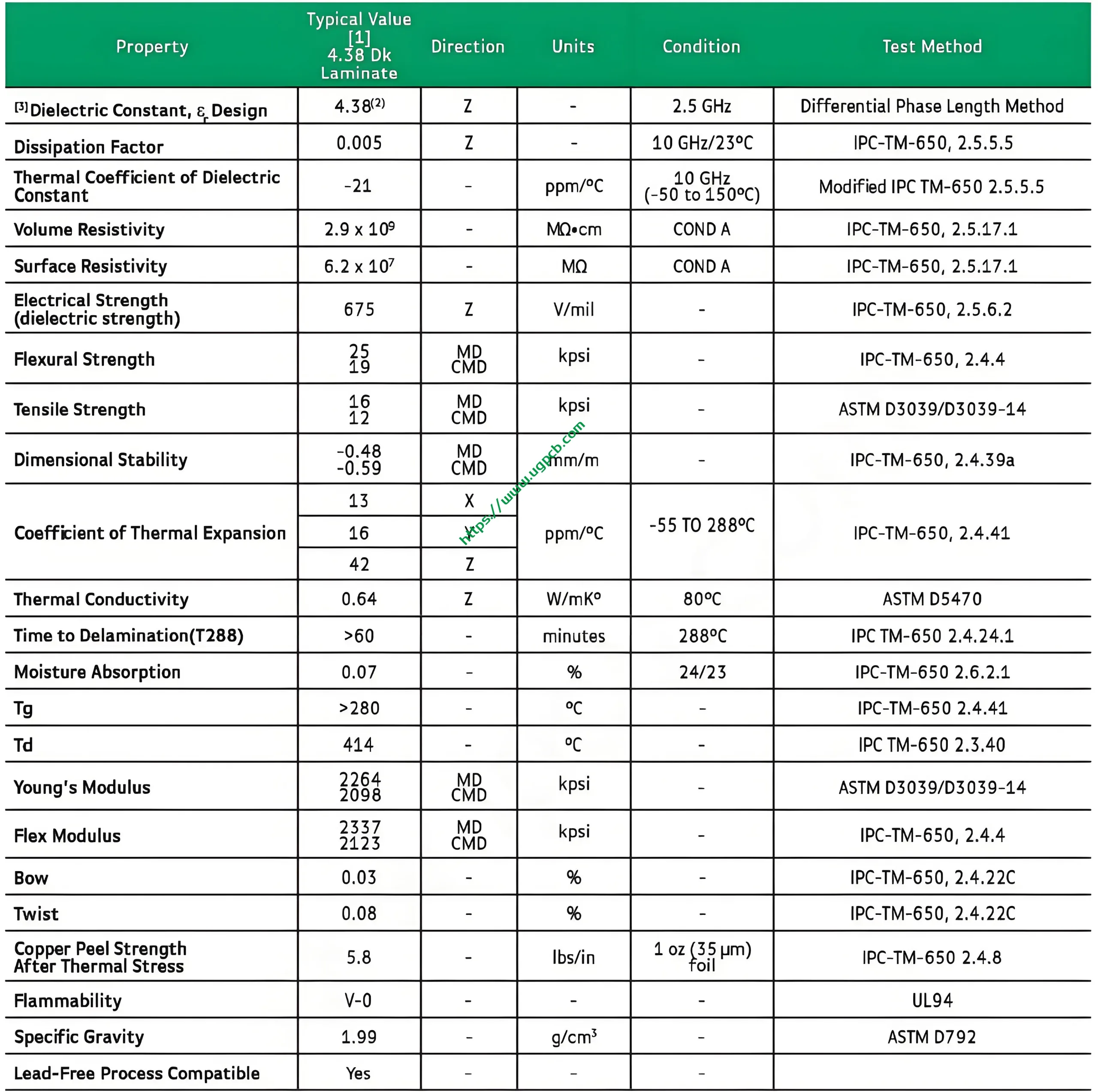Rogers Kappa 438 Material de PCB: A Superior Alternative to Conventional FR-4
Unmatched Electrical Performance and Stability
Rogers Kappa 438 distinguishes itself from traditional FR-4 PCB materials through its exceptional dielectric constant stability, low loss factor, and precise thickness consistency. These properties render it ideal for applications demanding stringent loss control and unwavering stability, thereby elevating the performance benchmarks in the realm of high-frequency designs.
Retaining Rogers’ Hallmark Low Loss Characteristics
Continuing Rogers’ legacy of delivering low loss materials, Kappa 438 maintains this crucial attribute vital for RF design optimization. With a dielectric constant (DK) value closely aligned to FR-4 at 4.38, yet boasting a mere 0.005 loss factor at 10 GHz, it emerges as the quintessential upgrade path for premium FR-4 replacement needs.

Engineered for Advanced Wireless Design Applications
Rogers Kappa 438 PCB material represents a thermosetting laminate ingeniously crafted from hydrocarbon resin ceramics. Tailored for wireless design engineers seeking enhanced performance and heightened reliability beyond conventional FR-4 alternatives, it addresses the escalating demands of modern wireless infrastructure.
Addressing the Evolving Needs of Wireless Data Transmission
The surge in wireless data traffic necessitates advanced mobile network capabilities and elevated performance standards. While FR-4 has long served as the go-to material for less demanding RF applications, the shifting landscape of wireless transmission infrastructure now calls for superior RF performance and consistency—a gap efficiently bridged by Rogers Kappa 438.
Breaking Free from Traditional FR-4 Constraints
Wireless circuit designers can achieve a transformative leap forward with Rogers Kappa 438 by transcending the limitations inherent in conventional FR-4 materials. Offering a balanced blend of cost-effectiveness and stability, this material ensures low loss, tight DK tolerance, and rigorous thickness control, thereby guaranteeing superior and consistent wireless circuit performance.
Enhancing Design Flexibility and Manufacturing Compatibility
Boasting reduced Z-axis CTE and elevated Tg characteristics, Rogers Kappa 438 facilitates improved design flexibility, enhanced PTH reliability, and seamless integration with automated assembly processes. Its compatibility with standard epoxy/glass (FR-4) manufacturing techniques, coupled with compatibility for lead-free soldering and UL94 V-0 flame retardancy, further augments its appeal. The strategic DK value of 4.38 also facilitates effortless substitution in designs requiring heightened electrical performance.
Advantages Overview of Rogers Kappa 438 Material de PCB
- Elevated Dielectric Constant: A DK of 4.38 en 2.5 GHz contributes to miniaturized circuit designs.
- Enhanced Conductor Efficiency: Lower conductor loss paired with superior heat treatment resilience.
- Ease of Processing & Assembly: Mimics FR-4’s processability for straightforward adoption.
- Electrical Performance Upgrade: Streamlines transition from FR-4 in pursuit of superior electrical attributes.
- Consistent Circuit Operation: Ensures reliable performance across batches.
- Design Optimization: Promotes flexibility, PTH dependability, auto-assembly friendliness.
- Safety Compliance: Meets UL 94 V-0 standards for flame retardancy.
Applications Catalogue of Rogers Kappa 438 Material de PCB
- Telecommunications Infrastructure: Base station antennas, carrier-grade Wi-Fi/License Assisted Access (LAA), small cell base stations, distributed antenna systems.
- Automotive Connectivity: Vehicle-to-everything (V2X) communication systems.
- IoT Ecosystem: Smart home devices, wireless sensing solutions.
- RFID & Radar Systems: Ground radar installations, Beidou navigation systems.
- Automotive Antennas: In-vehicle communication enhancements.
- Indoor Networking: Ceiling-mounted antennas for comprehensive coverage.
 UGPCB LOGO
UGPCB LOGO


